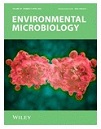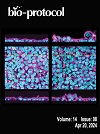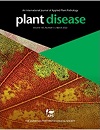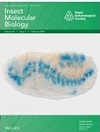Latest Publications
Multiple toxins and a protease contribute to the aphid-killing ability of Pseudomonas fluorescens PpR24
 Deepa Paliwal, Mojgan Rabiey, Tim H. Mauchline
Deepa Paliwal, Mojgan Rabiey, Tim H. Mauchline
Aphids are globally important pests causing damage to a broad range of crops. Due to insecticide resistance, there is an urgent need to develop alternative control strategies. In our previous work, we found Pseudomonas fluorescens PpR24 can orally infect and kill the insecticide-resistant green-peach aphid (Myzus persicae). However, the genetic basis of the insecticidal capability of PpR24 remains unclear. This comprehensive host–pathogen transcriptomic analysis provides novel insight into the molecular basis of bacteria-mediated aphid mortality and the potential of PpR24 as an effective biocontrol agent.
Imaging Single-Cell Ca2+ Dynamics of Brainstem Neurons and Glia in Freely Behaving Mice
 Amol M. Bhandare, Nicholas Dale, Robert T. R. Huckstepp
Amol M. Bhandare, Nicholas Dale, Robert T. R. Huckstepp
In vivo brain imaging, using a combination of genetically encoded Ca2+ indicators and gradient refractive index (GRIN) lens, is a transformative technology that has become an increasingly potent research tool over the last decade. We have refined the intravital imaging technique to image deep brain nuclei in the ventral medulla oblongata, one of the most difficult brain structures to image due to the movement of brainstem structures outside the cranial cavity during free behaviour (head and neck movement), whose targeting requires GRIN lens insertion through the cerebellum—a key structure for balance and movement. Our protocol refines the implantation method of GRIN lenses, giving the best possible approach to image deep extracranial brainstem structures in awake rodents with improved cell rejection/acceptance criteria during analysis. This revised method paves the way to image challenging brainstem structures to investigate their role in complex behaviours such as breathing, circulation, sleep, digestion, and swallowing, and could be extended to image and study the role of cerebellum in balance, movement, motor learning, and beyond.
Genetic Variation of Turnip Yellows Virus in Arable and Vegetable Brassica Crops, Perennial Wild Brassicas, and Aphid Vectors Collected from the Plants
 Ricardo J G Pimenta, Kyle Macleod, Robyn Babb, Kaitlyn Coleman, Joni MacDonald, Elvis Asare-Bediako, Max J Newbert, Carol E Jenner, John A Walsh
Ricardo J G Pimenta, Kyle Macleod, Robyn Babb, Kaitlyn Coleman, Joni MacDonald, Elvis Asare-Bediako, Max J Newbert, Carol E Jenner, John A Walsh
Turnip yellows virus (TuYV; Polerovirus, Solemoviridae) infects and causes yield losses in a range of economically important crop species, particularly the Brassicaceae. Although the incidence and genetic diversity of TuYV has been extensively investigated in recent years, little is known about how the diversity within host plants relates to that in its vectors. Arable oilseed rape (Brassica napus) and vegetable brassica plants (Brassica oleracea), wild cabbage (B. oleracea), and aphids present on these plants were sampled in the field in three regions of the United Kingdom. High levels of TuYV (82 to 97%) were detected in plants in all three regions following enzyme-linked immunosorbent assaysComparative analyses between TuYV sequences from host plants and B. brassicae collected from respective plants revealed differences between some ORF0 sequences, which possibly indicated that at least two of the aphids might not have been carrying the same TuYV isolates as those present in their host plants. Maximum likelihood phylogenetic analyses revealed three distinct major clades for ORF0 and one for ORF3, with some distinct subclades. Some clustering was related to geographic origin. Explanations for TuYV sequence differences between plants and the aphids present on respective plants and implications for the epidemiology and control of TuYV are discussed.
Manipulating multi-level selection in a fungal entomopathogen reveals social conflicts and a method for improving biocontrol traits
 Zoltan Erdos, David J. Studholme, Manmohan D. Sharma, David Chandler, Chris Bass, Ben Raymond
Zoltan Erdos, David J. Studholme, Manmohan D. Sharma, David Chandler, Chris Bass, Ben Raymond
Changes in parasite virulence are commonly expected to lead to trade-offs in other life history traits that can affect fitness. Understanding these trade-offs is particularly important if we want to manipulate the virulence of microbial biological control agents. We hypothesized that manipulating selection intensity at different scales would reveal virulence trade-offs in a fungal pathogen of aphids, Akanthomyces muscarius. Starting with a genetically diverse stock we selected for speed of kill, parasite yield or infectivity by manipulating competition within and between hosts and between-populations of hosts over 7 rounds of infection. We found that early sporulation led to reduced competitive fitness but could increase yield of spores on media, a trade-off characteristic of social conflict. Notably, the selection regime with strongest between-population competition and lowest genetic diversity produced the most consistent shift to early sporulation, as predicted by social evolution theory. Multi-level selection therefore revealed social interactions novel to fungi and showed that these biocontrol agents have the genomic flexibility to improve multiple traits—virulence and spore production—that are often in conflict in other parasites.
Early Detection of Fusarium Basal Rot Infection in Onions and Shallots Based on VOC Profiles Analysis
 Malgorzata Wesoly, Emma Daulton, Sascha Jenkins, Sarah van Amsterdam, John Clarkson and James A. Covington
Malgorzata Wesoly, Emma Daulton, Sascha Jenkins, Sarah van Amsterdam, John Clarkson and James A. Covington
In this work, we employed Gas chromatography ion-mobility spectrometry (GC-IMS) technology for early detection of Fusarium basal rot in brown onion, red onion, and shallot bulbs and for tracking disease progression during storage. The volatile profiles of the infected and healthy control bulbs were characterized using GC-IMS and gas chromatography-time-of-flight mass spectrometry (GC-TOF-MS). GC-IMS data combined with principal component analysis and supervised methods provided discrimination between infected and healthy control bulbs as early as 1 day after incubation with the pathogen, classification regarding the proportion of infected to healthy bulbs in a sample, and prediction of the infection’s duration with an average R2 = 0.92. Furthermore, GC-TOF-MS revealed several compounds, mostly sulfides and disulfides, that could be uniquely related to Fusarium basal rot infection.
Genome assembly and transcriptomic analysis to elucidate the ability of Nasonovia ribisnigri to break host plant resistance
 Dion Garrett, Graham Teakle, Rosemary Collier, James R. Bell, Sergio Cerezo-Medina, Ramiro Morales-Hojas
Dion Garrett, Graham Teakle, Rosemary Collier, James R. Bell, Sergio Cerezo-Medina, Ramiro Morales-Hojas
The currant-lettuce aphid (Nasonovia ribisnigri (Hemiptera: Aphididae) (Mosley)) is a cosmopolitan pest of outdoor lettuce. Until recently, the use of resistant cultivars was an effective method for managing N. ribisnigri. A resistant cultivar containing a single gene (Nr-locus), introduced in the 1980s, conferred complete resistance to feeding. Overreliance of this Nr-locus in lettuce resulted in N. ribisnigri's ability to break resistance mechanism. Our work attempts to understand which candidate gene(s) are associated with this resistance-breaking mechanism. We present two de novo draft assembles for N. ribisnigri genomes, corresponding to both avirulent (Nr-locus susceptible) and virulent (Nr-locus resistant) biotypes.. Out of the 18,872 differentially expressed genes, a single gene/locus was identified in N. ribisnigri that was shared between two resistant-breaking biotypes. This locus was further explored and validated in Real-Time Quantitative Reverse Transcription PCR (qRT-PCR) experiments and has predicted localisations in both the cytoplasm and nucleus. This is the first study to provide evidence that a single gene/locus is likely responsible for the ability of N. ribisnigri to overcome the Nr-locus resistance in the lettuce host.
